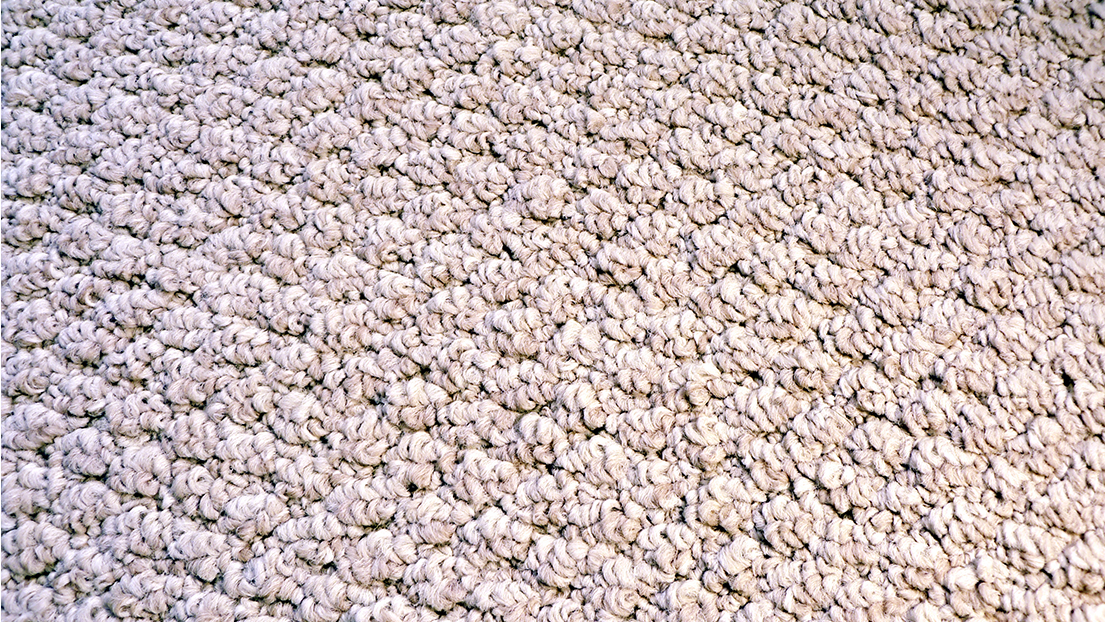
The name Berber comes from the Berber tribes of North Africa, a nomadic people who lived by raising sheep. A true Berber carpet is made only from the naturally pigmented wool fibers that come from the Karakul sheep. The fibers are usually white, light and dark brown, black and rust in color and are spun into coarse low twist yarns and then tufted into loop pile carpets. Because of the natural pigmentation, these fibers are susceptible to color bleeding. In addition, the Karakul wool is a fiber that tends to have more medulation (hollow filled center), which makes it a little more brittle. These characteristics lead to a greater potential for fuzzing and pilling.
Berber carpets have been in use for more than 100 years. Today, the carpet industry produces many different styles of carpet with the “berber look.” Many manufacturers today offer 100% wool berber carpets, some woven and some tufted. Due to the popularity of the look, many manufacturers have begun to offer berber in 100% nylon and olefin fibers. This makes the “berber look” affordable to more of the carpet buying public. The synthetic styles of berber carpets are usually easier to clean than the wool styles. This is because they often can be brushed more aggressively without texture distortion. Some olefin berbers can even be cleaned using the zebra (black/white) brushes. It is always vital to test brushes for texture change before using them.
One way to minimize the texture distortion on a 100% wool berber carpet during cleaning is to brush with the HOST Machine in only one direction. You should brush in the direction of the rows of loops and not across the loops. Sometimes this may mean brushing diagonally. Of course, the soft gold brushes should always be used on wool berbers. In some cases, the carpet is so delicately constructed that even brushing in this fashion will cause some difference in the texture of the carpet. In this case, it is best to decline to clean this particular carpet. Remember, if it is a difficult carpet for you to clean with the HOST System, it is equally difficult to clean with any other method of cleaning. In most cases, you will want to use HOST SJ since most berbers are white or off-white. On some extremely delicate berbers, spots and spills can be removed by hand using HOST Dry Extraction Cleaner and brushing with your fingers or the hand brush. Pack HOST cleaner on the carpet and allow it to dry thoroughly. Vacuum carefully using only a straight suction vacuum cleaner nozzle. Recognize that this would be a very labor intensive method for wall-to-wall cleaning, but it could be useful for small spots and spills.
If you are having difficulty vacuuming HOST cleaner from a berber carpet, there are several tips to try. Be sure the HOST cleaner is totally dry (use a moisture detector to determine this). Vacuum with the correct type of vacuum agitator. If the berber is a synthetic such as nylon or olefin, vacuum with the HOST Liberator or Freestyle. Watch the texture carefully; if you notice a change, stop! On some very difficult styles you may need a straight suction nozzle which should be passed over the area slowly in two directions. Remember these carpets are a challenge to clean regardless of the method of cleaning. Always qualify the job before you start. Look for existing texture distortion and point this out to your customer. Explain the limitations of cleaning this type of carpet. Be sure they understand that some HOST cleaner will remain after cleaning and will come out in subsequent vacuumings.

